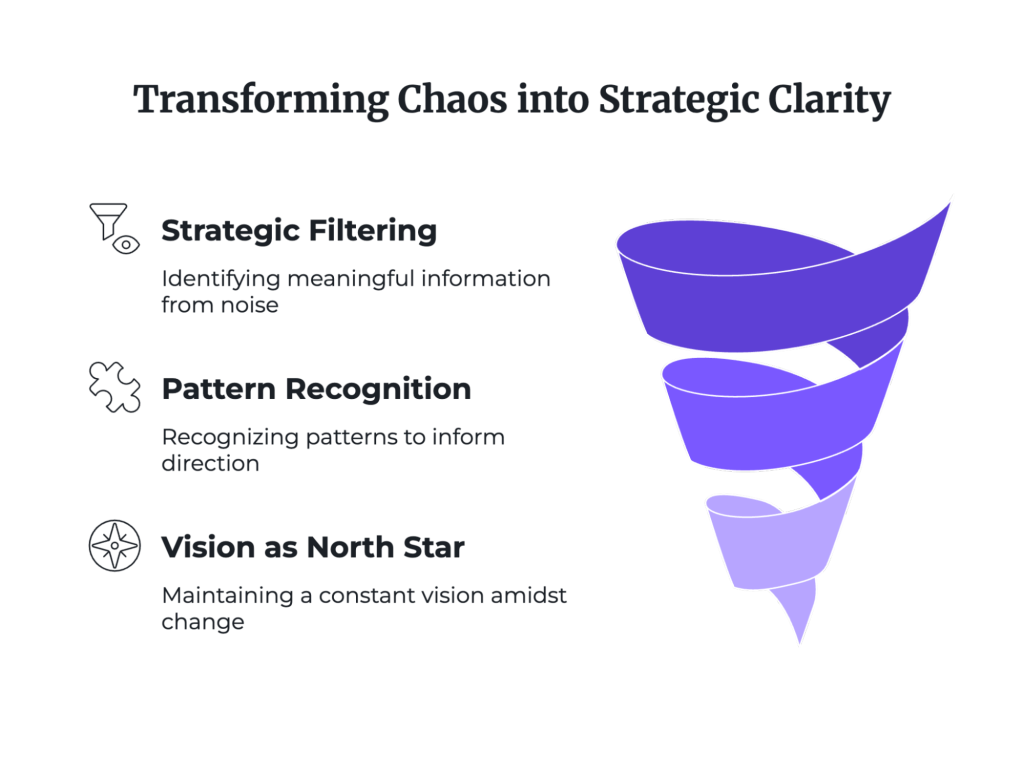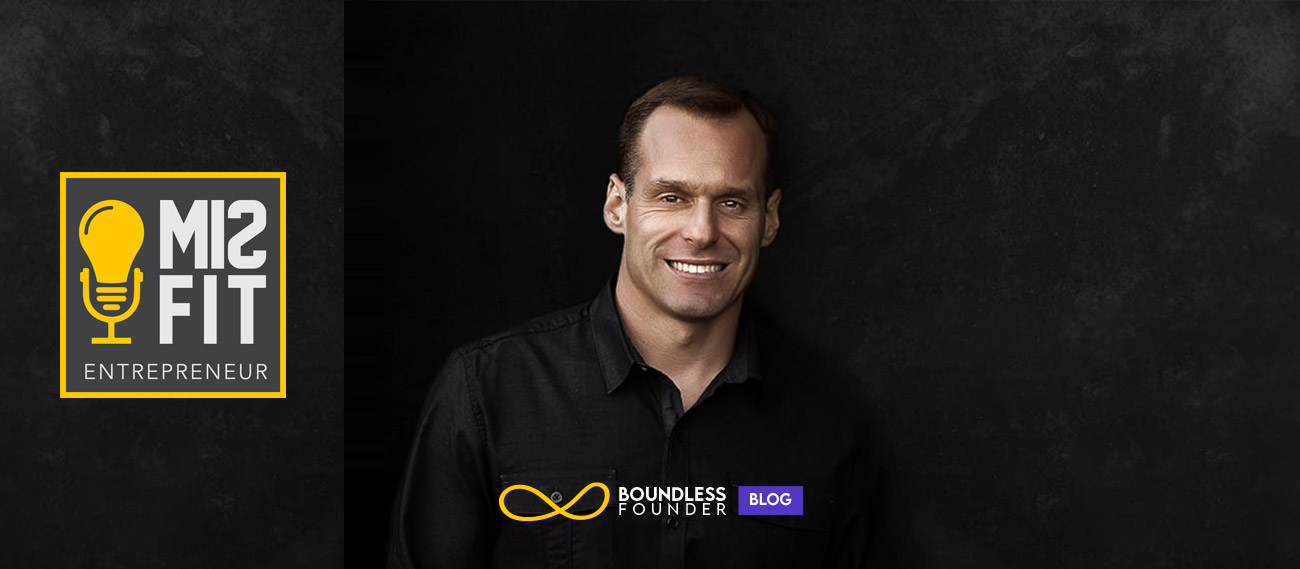Two Hours Before Everything Fell Apart
January 2021. We were two hours away from signing the acquisition papers. A multi-billion-dollar company was buying us out, and months of due diligence had led to this moment. My team had received their offer letters. The champagne was practically on ice.
Then my phone rang.
“We have to back out,” the voice said. Another company with deeper pockets had swooped in with an offer they couldn’t refuse. Just like that, our deal was dead.
In that moment—standing in my home office with the contract still open on my laptop—the market chaos I’d been navigating for years suddenly came into sharp focus. Every voice telling me to shut down, every doubt about our viability, every fear about running out of options—it all became noise.
And for the first time, I fully understood what it means to have an entrepreneurial mind: it’s not about avoiding uncertainty, but about staying mentally agile when everything falls apart. The entrepreneurial mind doesn’t find clarity by escaping chaos—it finds clarity by learning to think differently within it.
The Hidden Cost of Market Noise
Every entrepreneur faces this challenge: distinguishing between meaningful market signals and the endless stream of distractions that masquerade as opportunities. Research from MIT Sloan reveals that an entrepreneurial mindset must be “resilient, resourceful, and solutions-oriented—even when the conditions say otherwise.” But how do we maintain this clarity when everything around us screams for attention?
The problem isn’t just information overload. It’s that in today’s hyper-connected world, every piece of data feels urgent. Every competitor’s move seems threatening. Every market fluctuation appears catastrophic. We mistake activity for progress, confusing the noise of daily operations with the signal of strategic direction.
I’ve watched brilliant founders exhaust themselves chasing every trend, pivoting with every market shift, until their original vision becomes unrecognizable. They’re not failing because they lack intelligence or effort—they’re drowning in noise because they haven’t developed the mental frameworks to filter what truly matters.
What made the difference when my acquisition fell through wasn’t my ability to control the situation—it was my ability to see through the chaos to find opportunity. Within 24 hours of that devastating call, I had transformed a catastrophic failure into the beginning of a better outcome.
The Entrepreneurial Mind: A Different Operating System
What I discovered through my AWS crisis and subsequent journey is that the entrepreneurial mind isn’t just about thinking differently—it’s about developing an entirely different operating system for processing reality. This aligns with what researchers call the Chaos Leadership Framework, which suggests that effective leaders can “use disorder to gain strategic advantage.”
The entrepreneurial mind operates on three core principles that I’ve refined through years of practice:
- Strategic Filtering: Just as signal processing experts define signal as “meaningful information that you’re trying to detect” versus noise as “random, unwanted variation,” entrepreneurs must develop filters for business information. The Pareto Principle suggests that 80% of information won’t give results proportional to the effort needed to act upon it.
- Pattern Recognition Over Reaction: Instead of responding to every market movement, the entrepreneurial mind seeks patterns. As research indicates, “certain patterns emerge in chaos, which can inform our direction. These patterns are often first observed by those on the front line.” When our acquisition failed, I recognized a pattern: the market’s validation of our value wasn’t tied to a single buyer—it was inherent in what we’d built.
- Vision as North Star: While tactics may shift, vision remains constant. This requires what I call “strategic bursts”—focused periods of thinking that identify priorities over the next 12-18 months rather than getting lost in five-year plans that become obsolete within months.

My Journey from Chaos to Clarity
After that devastating phone call, I could have spiraled into despair. Our board had already suggested that we wind down operations. We had limited runway, and the market seemed to be sending a clear signal: give up.
But years of navigating entrepreneurial chaos had taught me something crucial. I took 24 hours, not to wallow, but to recalibrate. I borrowed a technique from Kevin D. Johnson’s “The Entrepreneur Mind”: moving from chaos to focus through “strategic allocation of resources toward that which is of most value.” Instead of seeing a closed door, I asked different questions:
- What did we learn from this process? (Result: We had a valuable LOI that proved our worth)
- What other options existed? (Action: Immediately began shopping the LOI to other buyers)
- What was the real signal here? (Insight: The market validated our value; we just needed different buyers)
Within 24 hours, I had shifted from devastation to determination. By filtering out the emotional noise and focusing on actionable signals, we secured five new introductions. A few months later, we sold the company for far more than the original offer.
That failed acquisition forced me to develop the mental models that transform apparent disasters into opportunities. It wasn’t about positive thinking—it was about thinking differently.
Building Your Strategic Clarity Framework
Based on my experience and research into entrepreneurial decision-making frameworks, here’s how you can develop your own system for finding clarity in chaos:
1. Implement the Signal-to-Noise Filter
Daily Practice: Each morning, list all the “urgent” items demanding your attention. Then apply this filter:
- Does this directly impact our core value proposition?
- Will this matter in 90 days?
- Is this a pattern or an isolated incident?
Only items that pass all three filters deserve immediate strategic attention.
2. Create Strategic Burst Sessions
Following research on strategic planning in chaos, schedule weekly 90-minute sessions where you:
- Review key metrics (not vanity metrics)
- Identify emerging patterns
- Adjust tactics while maintaining vision
- Document decisions and rationale
3. Build Your Vision Reassessment Rhythm
Using insights from the Clarity Canvas Framework, establish quarterly vision reviews that examine:
- Financial Lens: Where profit truly comes from versus where you’re leaking resources
- Strategic Lens: Alignment between daily activities and long-term goals
- Operational Lens: Whether execution matches intention
4. Develop Pattern Recognition Skills
Train yourself to spot meaningful patterns by:
- Documenting “surprises” weekly
- Looking for connections between seemingly unrelated events
- Seeking input from front-line team members who often see patterns first
- Testing hypotheses rather than making assumptions
5. Practice Strategic Boundaries
As the Chaos Leadership Framework emphasizes, establish “necessary boundaries and direction to navigate through tumultuous times.” This means:
- Defining non-negotiable values
- Setting clear criteria for opportunity evaluation
- Creating frameworks for rapid decision-making
- Building systems that function without your constant input
The Transformation Awaits
When you develop the entrepreneurial mind’s ability to find clarity in chaos, remarkable transformations occur:
Immediate Benefits (First 30 Days):
- Reduced anxiety from having a clear filtering system
- Faster decision-making through established frameworks
- Improved team alignment around core priorities
Medium-term Results (3-6 Months):
- Better resource allocation toward high-impact activities
- Increased ability to spot genuine opportunities versus distractions
- Enhanced resilience during market turbulence
Long-term Transformation (6-12 Months):
- Intuitive pattern recognition that seems almost predictive
- Calm confidence even during significant market shifts
- A business that thrives on change rather than despite it
The entrepreneurs who survive aren’t necessarily smarter or better funded—they’ve simply developed the mental operating system to process chaos effectively. When that acquisition fell through, everyone saw disaster. But with the right mental framework, I saw data: we were valuable enough for a multi-billion dollar company to want us. That signal, hidden in the noise of failure, led to an even better exit just months later.
Your Next Step Toward Strategic Clarity
The journey from chaos to clarity isn’t a destination—it’s a practice. Just as that failed acquisition forced me to develop new mental models for seeing opportunity in apparent disaster, your current challenges are invitations to upgrade your entrepreneurial operating system.
Ready to dive deeper into building the mental frameworks that separate thriving entrepreneurs from those who merely survive? Get your copy of “The Inside-Out Entrepreneur” where I share the complete system for developing resilience, managing the thoughts-emotions loop, and building the support structures that sustain long-term success.
For immediate implementation support, download our free Strategic Clarity Workbook and join thousands of entrepreneurs who are learning to find signal in the noise.











Responses